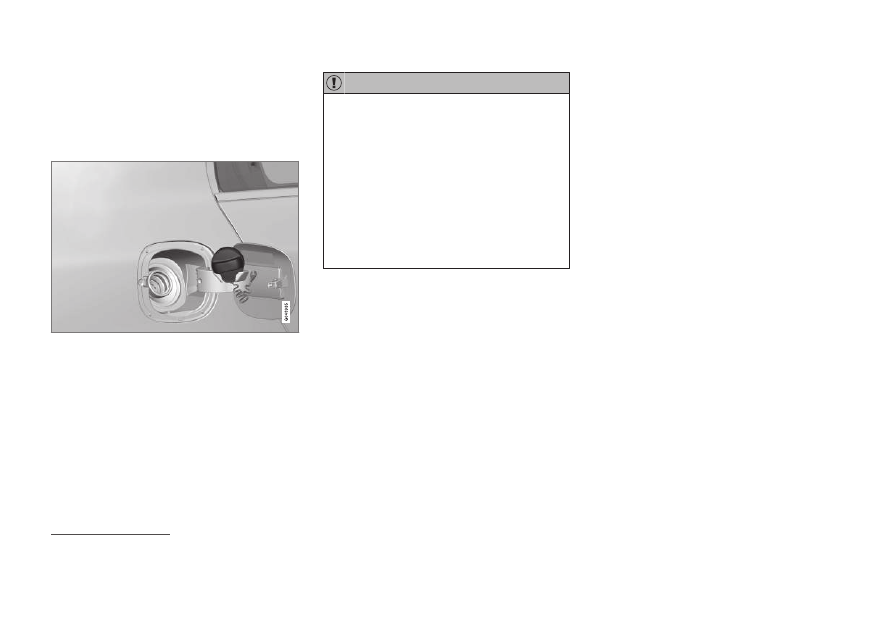Volvo S60 (2018 year). Manual - part 17

STARTING AND DRIVING
}}
281
Refueling – opening/closing fuel
cap
If necessary, the fuel filler door can be opened
manually.
Opening/closing the fuel cap
Fuel vapor expands in hot weather. Open the filler
cap slowly.
After refueling, close the fuel filler cap by turning
it clockwise until it clicks into place.
•
Do not refuel with the engine running
12
.
Turn the ignition off or to position I. If the
ignition is on, an incorrect reading could
occur in the fuel gauge.
•
Avoid overfilling the fuel tank. Do not
press the handle on the filler nozzle more
than one extra time. Too much fuel in the
tank in hot weather conditions can cause
the fuel to overflow. Overfilling could also
cause damage to the emission control
systems.
Related information
•
Refueling – fuel requirements (p. 277)
•
Refueling – octane rating (p. 278)
Emission controls
Three-way catalytic converter
•
Keep your engine properly tuned. Certain
engine malfunctions, particularly involving the
electrical, fuel or distributor ignition systems,
may cause unusually high three-way catalytic
converter temperatures. Do not continue to
operate your vehicle if you detect engine
misfire, noticeable loss of power or other
unusual operating conditions, such as engine
overheating or backfiring. A properly tuned
engine will help avoid malfunctions that
could damage the three-way catalytic con-
verter.
•
Do not park your vehicle over combustible
materials, such as grass or leaves, which can
come into contact with the hot exhaust sys-
tem and cause such materials to ignite under
certain wind and weather conditions.
•
Excessive starter cranking (in excess of one
minute), or an intermittently firing or flooded
engine can cause three-way catalytic con-
verter or exhaust system overheating.
•
Remember that tampering or unauthorized
modifications to the engine, the Engine Con-
trol Module, or the vehicle may be illegal and
can cause three-way catalytic converter or
exhaust system overheating. This includes:
altering fuel injection settings or compo-
12
If the fuel filler cap is not closed tightly or if the engine is running when the vehicle is refueled, the Check Engine Light (malfunction indicator lamp) may indicate a fault. However, your vehicle's performance will
not be affected. Use only Volvo original or approved fuel filler caps.